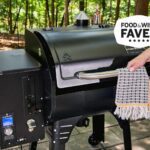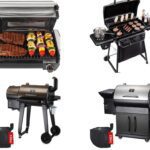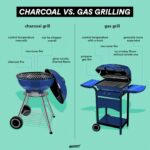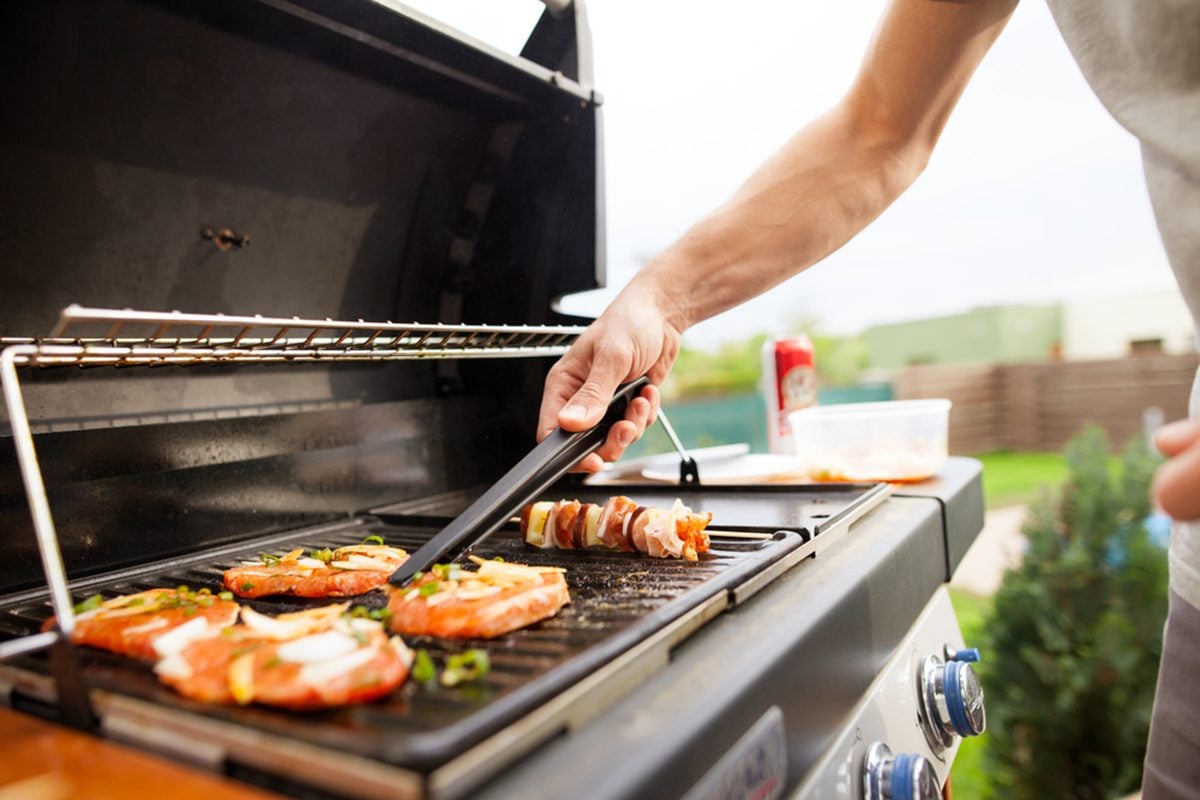
If you’ve ever found yourself struggling to fire up a charcoal grill or feeling overwhelmed by high-tech features on a gas grill, then you might be wondering, “What is the easiest type of grill to use?” Well, worry no more.
Our product lets you discover the ultimate answer to make your outdoor cooking experience a breeze. Let’s explore the different types of grills available, their user-friendly features, and determine which one takes the crown as the simplest grill to handle. Get ready to become the master of your backyard barbecues!
Charcoal Grills
Overview
Charcoal grills are a classic and popular choice among enthusiasts for their smoky flavor and versatility. These grills use charcoal briquettes or lump charcoal as fuel, giving your food that distinct charcoal taste many people love. One of the advantages of charcoal grills is their simplicity, making them a great option for beginners and experienced grillers alike.
Starting and Controlling the Fire
To start a charcoal grill, you’ll need to arrange the charcoal in a pyramid shape and add lighter fluid or use a chimney starter. Light the charcoal and let it burn for 10-15 minutes until the coals turn gray. Once the coals are ready, you can spread them evenly across the charcoal grate.
Controlling the fire on a charcoal grill can be done by adjusting the air vents. Opening the vents allows more oxygen in, resulting in a hotter fire. Closing the vents restricts airflow, reducing the heat. Additionally, you can control the heat by adjusting the height of the charcoal grate, placing it closer to or farther away from the food.
Maintenance and Cleaning
After each use, cleaning your charcoal grill is important to ensure its longevity and efficiency. Start by removing the ashes from the charcoal grate and the bottom of the grill. Use a brush or scraper to clean any residue or food particles from the cooking grate. Wash the grill grates with warm soapy water and rinse thoroughly. Finally, wipe down the grill’s exterior with a damp cloth or sponge.
Gas Grills
Overview
Gas grills are known for their convenience and ease of use. They usually run on propane or natural gas, providing a quick and consistent heat source. Gas grills are perfect for those who want to get grilled quickly without the hassle of dealing with charcoal or wood.
Starting and Controlling the Heat
Starting a gas grill is as simple as turning a knob. Most gas grills come with an electronic ignition system, allowing you to ignite the burners with a push of a button easily. Once the burners are on, you can adjust the heat using the control knobs. Each burner usually has its own knob, allowing for precise temperature control.
To control the heat on a gas grill, you can adjust the burner knobs to increase or decrease the flame intensity. You can achieve higher temperatures by turning up the heat while turning it down will lower it. Some gas grills also come with built-in temperature gauges, making monitoring and controlling heat levels easier.
Maintenance and Cleaning
Regular maintenance and cleaning are essential for keeping your gas grill in optimal condition. Start by brushing the cooking grates with a wire brush to remove any food residue. Clean the burners with a brush or scraper to remove grease or debris.
Remember to check the gas lines for any blockages or leaks, and clean the grease tray or drip pan to prevent flare-ups. Also, make sure to cover your gas grill when not in use to protect it from the elements.
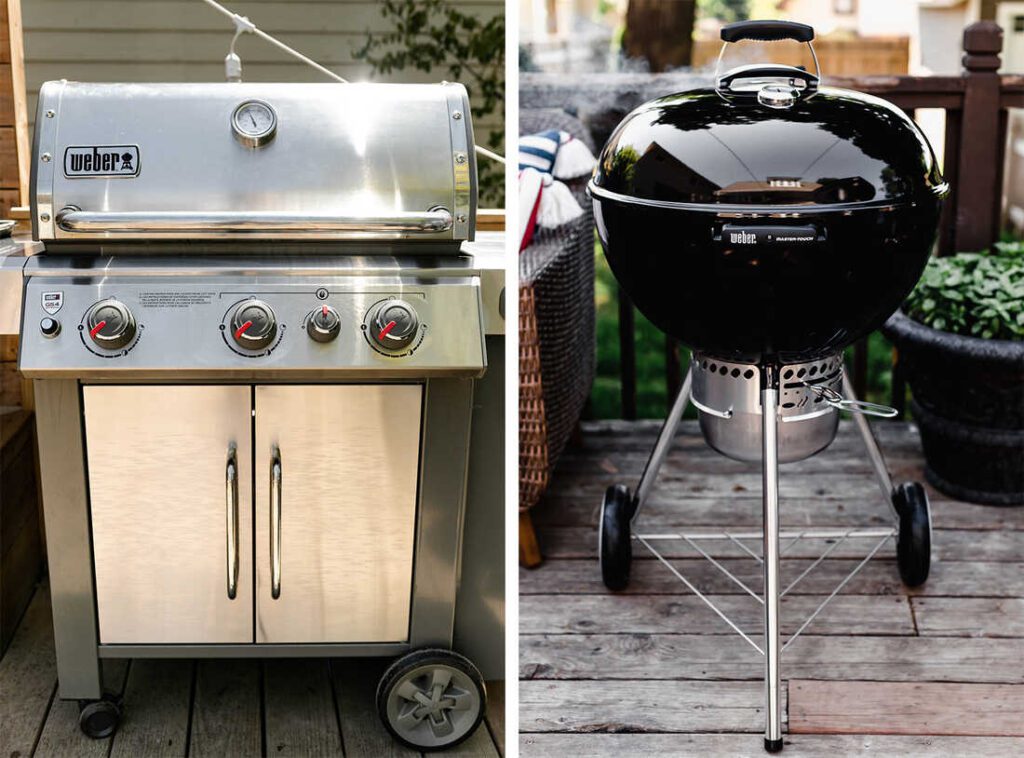
This image is property of media.npr.org.
Electric Grills
Overview
Electric grills are an excellent choice for those who live in apartments or condominiums where open-flame grilling is not allowed. These grills are powered by electricity and provide a convenient and smokeless grilling experience. Electric grills are known for quick heating capabilities and easy temperature control.
Starting and Controlling the Heat
To start an electric grill, plug it into an electrical outlet and turn it on. Electric grills typically have adjustable temperature controls, allowing you to set and maintain the desired heat level easily. Some models even come with pre-set cooking programs for specific types of food, making it even easier to achieve perfect results every time.
Maintaining and controlling the heat on an electric grill is as easy as adjusting the temperature settings. Most electric grills have a temperature dial or control panel that allows you to increase or decrease the heat as needed. It’s important to monitor the temperature to avoid overcooking or undercooking your food.
Maintenance and Cleaning
Cleaning an electric grill is relatively simple. Start by unplugging the grill and letting it cool down. Remove the cooking grates and wash them with warm soapy water. Wipe down the interior and exterior of the grill with a damp cloth or sponge.
Make sure to remove any grease or food residue. Avoid submerging the grill in water or immersing the electrical components in liquid. Always follow the manufacturer’s instructions for proper cleaning and maintenance.
Pellet Grills
Overview
Pellet grills, also known as pellet smokers, are a unique type of grill that uses wood pellets as fuel. These grills offer the convenience of gas grills with the versatility and flavor of wood-fired cooking. Pellet grills are known for their precise temperature control and ability to infuse food with rich smoky flavors.
Starting and Controlling the Fire
To start a pellet grill, you’ll need to fill the hopper with wood pellets of your choice. The pellets are then automatically fed into the firebox by an electric auger. Turn on the grill and set the desired temperature using the control panel. The grill’s digital controller will automatically adjust the pellet feed rate to maintain a consistent temperature.
Controlling the temperature on a pellet grill is as simple as adjusting the temperature settings on the control panel. Most pellet grills allow you to set the temperature in 5 or 10 degrees increments. The grill’s internal temperature sensor and auger system work together to maintain the desired heat level throughout the cooking process.
Maintenance and Cleaning
Maintaining and cleaning a pellet grill is relatively easy. After each use, empty any unused wood pellets from the hopper. Clean the cooking grates with a grill brush or scraper to remove any food residue.
Use a vacuum or brush to remove ash buildup from the firebox and clean out the grease tray or drip pan. Inspecting and cleaning the grill’s electrical components, such as the auger and temperature sensor, is also important to ensure proper functioning.

This image is property of www.foodandwine.com.
Wood Grills
Overview
Wood grills, also known as offset smokers, are a traditional and authentic way of grilling and smoking food. These grills use wood logs or chunks as fuel, giving your food a smoky flavor. Pitmasters and barbecue enthusiasts favor wood grills for their ability to create tender and flavorful meats.
Starting and Controlling the Fire
To start a wood grill, you’ll need to arrange the wood logs or chunks in the firebox. Use kindling or newspaper to ignite the wood, and let it burn until it forms a bed of hot coals. Once the coals are ready, you can carefully place your food on the cooking grate.
Controlling the fire and heat on a wood grill requires adjusting the airflow. Most wood grills have vents or dampers that allow you to regulate the amount of oxygen that reaches the fire.
Opening the vents increases the airflow, resulting in a hotter fire, while closing the vents restricts airflow, reducing the heat. Additionally, you can control the heat by adding or removing wood logs or chunks as needed.
Maintenance and Cleaning
Wood grills require regular maintenance and cleaning to ensure optimal performance and longevity. After each use, remove any ashes from the firebox. Clean the cooking grates with a brush or scraper to remove any food residue or grease buildup.
Wipe down the exterior of the grill with a damp cloth or sponge. Inspecting and cleaning the chimney or smokestack is also important to prevent any blockages. Proper maintenance will ensure that your wood grill continues to produce delicious smoky flavors.
Portable Grills
Overview
Portable grills offer the convenience of grilling on the go. Whether camping, tailgating, or having a picnic, these compact grills allow you to enjoy delicious grilled food wherever you are. Portable grills come in various sizes and fuel types, making them a versatile and easy-to-use option for outdoor cooking.
Starting and Controlling the Heat
Starting a portable grill depends on the type of fuel it uses. Gas and electric portable grills typically come with electronic ignition systems, making them easy to start with the push of a button. Charcoal and wood portable grills require manual lighting using lighter fluid or a chimney starter.
Controlling the heat on a portable grill is similar to controlling heat on regular grills. Gas and electric grills usually have temperature control knobs or dials that allow you to adjust the heat output. For charcoal and wood grills, controlling the heat can be done by adjusting the airflow through vents or dampers.
Maintenance and Cleaning
Maintaining and cleaning a portable grill is essential to keep it in good working condition. After each use, remove any ashes or debris from charcoal or wood grills. Clean the cooking grates with a brush or scraper to remove any food residue.
Clean the grates and interiors with warm soapy water for gas or electric portable grills and rinse thoroughly. Wipe down the exterior of the grill with a damp cloth or sponge. Portable grills are designed for easy transportation, so make sure to secure any loose parts before packing them up.
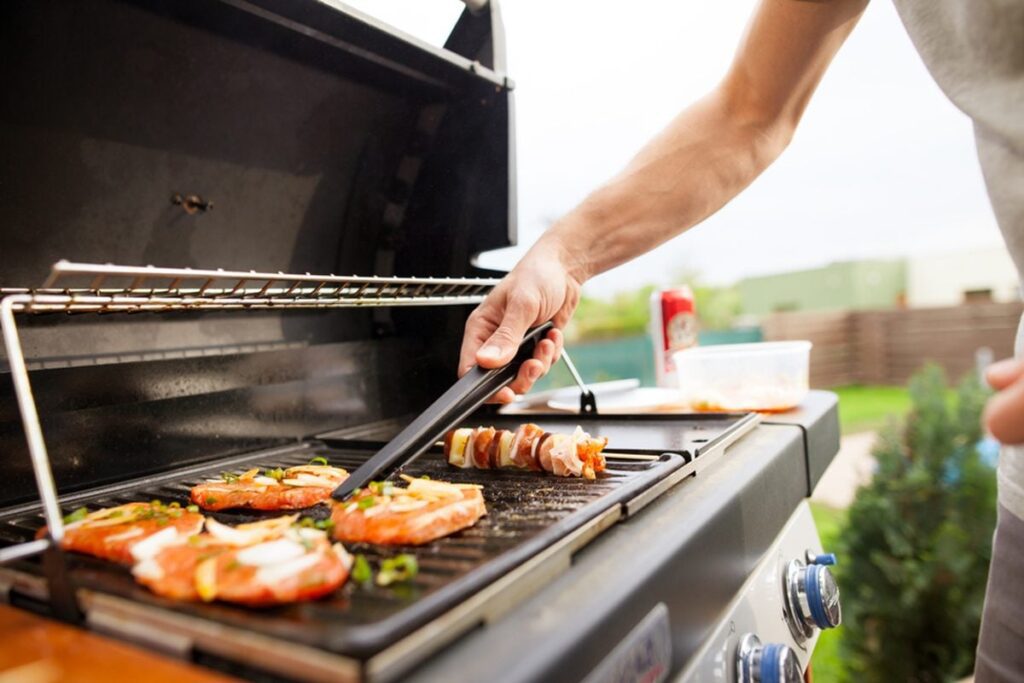
This image is property of www.tasteofhome.com.
Infrared Grills
Overview
Infrared grills are gaining popularity for their ability to heat food quickly and evenly. These grills use infrared technology to create intense direct heat, resulting in faster cooking times and even heat distribution. Infrared grills are ideal for searing steaks and other meats while locking in the natural juices and flavors.
Starting and Controlling the Heat
Starting an infrared grill is similar to starting a gas grill. Most infrared grills come with electronic ignition systems allowing easy and quick ignition with a button push.
Once the grill is heated, you can control the heat intensity by adjusting the burner controls. Infrared grills often have multiple burner controls, allowing for precise heat adjustments.
Controlling the heat on an infrared grill can be done by adjusting the burner controls or using the built-in temperature gauges. Lowering the heat will create a milder cooking environment while increasing the heat will provide a more intense searing experience.
The infrared technology ensures that the heat is evenly distributed across the cooking surface, resulting in consistent cooking results.
Maintenance and Cleaning
Maintaining and cleaning an infrared grill is similar to maintaining and cleaning a gas grill. After each use, remove any food debris or grease from the cooking grates using a brush or scraper. Clean the exterior of the grill with a damp cloth or sponge.
It’s also important to check and clean the burner elements and remove any obstructions or blockages. Regular cleaning will help prolong the lifespan of your infrared grill and ensure optimal performance.
Combo Grills
Overview
Combo grills, also known as multi-fuel grills, provide the versatility of multiple fuel types in one grill. Depending on your cooking preferences, these grills allow you to switch between different fuel sources, such as gas, charcoal, and wood. Combo grills are ideal for those who enjoy experimenting with different fuel types and flavors.
Starting and Controlling the Heat and Fire
Starting and controlling the heat and fire on a combo grill depends on your specific fuel source. If you’re using the gas option, turn the knobs to ignite the burners and adjust the heat. For charcoal or wood options, follow the respective lighting and controlling methods mentioned earlier in the charcoal and wood grill sections.
Controlling the heat and fire on a combo grill is similar to controlling heat on individual grills. Adjust the burner controls for gas grilling to increase or decrease the heat output. When using charcoal or wood, control the heat by adjusting the airflow through vents or dampers and adding or removing fuel as needed.
Maintenance and Cleaning
Maintaining and cleaning a combo grill requires following each fuel type’s maintenance and cleaning methods. Regularly clean the cooking grates, remove any ash or debris, and inspect the overall condition of the grill.
It’s also important to clean the different fuel sources’ specific components, such as gas burners, charcoal grates, or wood fireboxes. Proper maintenance and cleaning will ensure that your combo grill performs consistently and provides delicious meals.
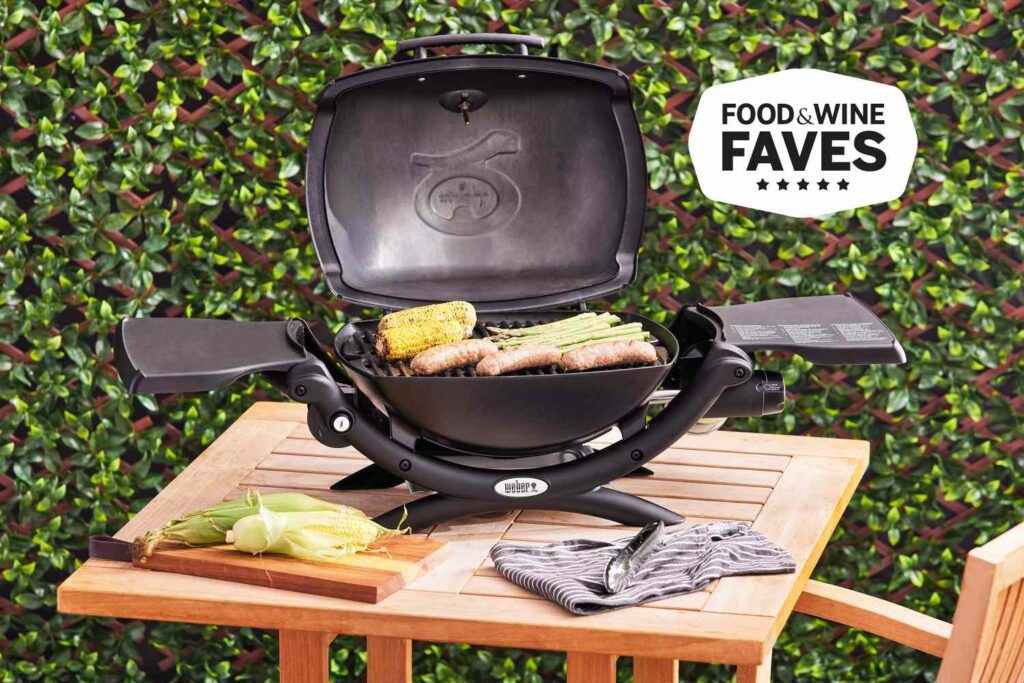
This image is property of www.foodandwine.com.
Ceramic Grills
Overview
Ceramic grills, known as kamado grills, are popular for serious grill enthusiasts. These grills are made of thick ceramic material, which helps retain heat and moisture and provides excellent insulation.
Ceramic grills are known for their versatility and ability to achieve high-heat grilling and low and slow smoking.
Starting and Controlling the Heat
Starting a ceramic grill requires arranging charcoal or wood in the firebox and lighting it using a chimney starter or lighter fluid. Once the coals are ignited, close the lid and adjust the airflow through the vents or dampers.
Opening the vents allows more oxygen in, resulting in a hotter fire. Closing the vents restricts airflow, reducing the heat. The thick ceramic walls help retain and distribute the heat evenly throughout the grill.
Controlling the heat on a ceramic grill requires adjusting the airflow through the vents or dampers. Opening the vents increases the airflow, resulting in higher temperatures. Closing the vents restricts the airflow and reduces the heat. Additionally, you can control the heat by adding or removing charcoal or wood as needed.
Maintenance and Cleaning
After each use, remove any ashes or debris from the firebox and clean the cooking grates with a brush or scraper. Wipe down the exterior of the grill with a damp cloth or sponge. Cleaning the ceramic walls is unnecessary unless there is excess buildup or residue.
However, inspecting and cleaning the vents or dampers is important to prevent any blockages. Regular maintenance and cleaning will ensure your ceramic grill continues to perform at its best.
Smokeless Grills
Overview
Smokeless grills are a great option for those who want to enjoy the flavors of grilled food without the smoke and strong odors. These grills use a combination of electric heating elements and special plates to eliminate much of the smoke produced during the cooking process. Smokeless grills are perfect for indoor or outdoor use, allowing you to grill with minimal smoke.
Starting and Controlling the Heat
Starting a smokeless grill is as simple as plugging it into an electrical outlet and turning it on. Most smokeless grills have adjustable temperature controls, allowing you to set and maintain the desired heat level. The grill’s heating elements and plates evenly distribute the heat, ensuring consistent cooking results.
Controlling the heat on a smokeless grill can be done by adjusting the temperature settings. Most smokeless grills have temperature dials or control panels that allow you to increase or decrease the heat. It’s important to monitor the temperature to avoid overcooking or undercooking your food.
Maintenance and Cleaning
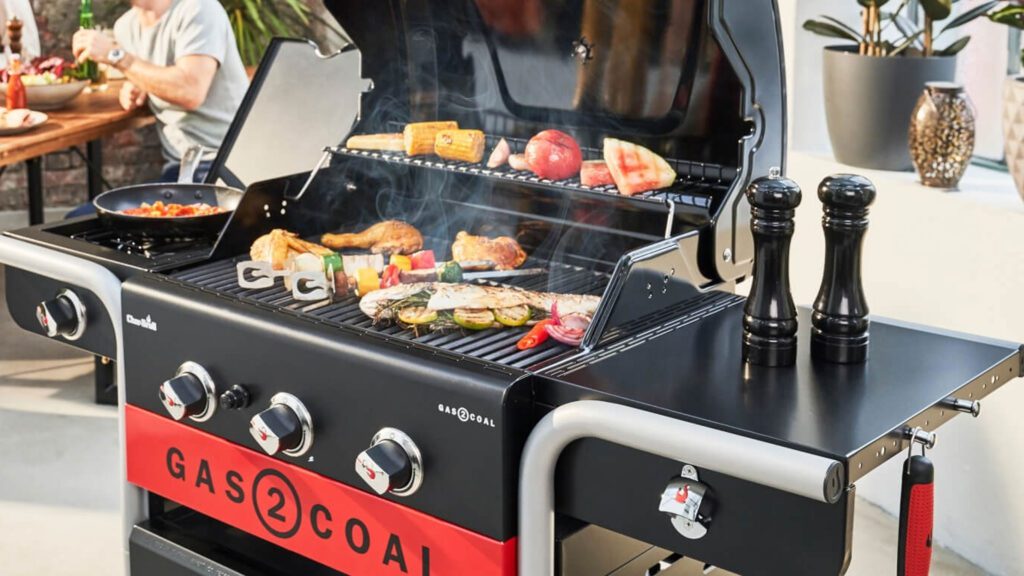
Cleaning a smokeless grill is relatively easy. After each use, unplug the grill and let it cool down. Remove the cooking plates or grates and wash them with warm soapy water. Wipe down the interior and exterior of the grill with a damp cloth or sponge.
Avoid submerging the grill in water or immersing the electrical components in liquid. Always follow the manufacturer’s instructions for proper cleaning and maintenance.
In conclusion, a wide variety of grills are available, each with unique features and benefits. Whether you prefer the traditional smoky flavor of a charcoal grill, the convenience of a gas grill, or the versatility of a combo grill, there is a grill out there to suit your needs.
By understanding the starting and controlling methods and the maintenance and cleaning requirements of each grill type, you can make an informed decision and enjoy the grilling experience to the fullest. Happy grilling!
This image is property of cdn.mos.cms.futurecdn.net.
